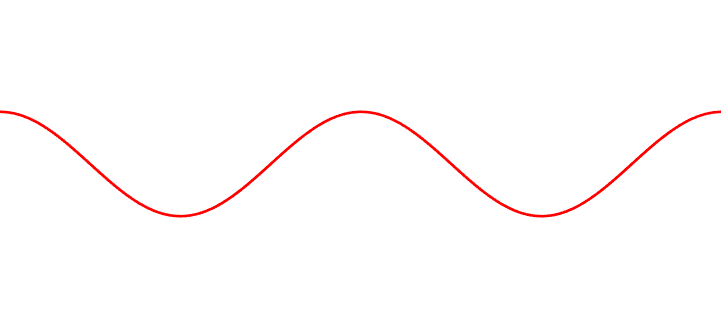Drawing Pretty Equations
Concept
Recently, I had the goal of creating a program that could take in any mathematical function and draw the graph of the equation to the screen, somewhat like Desmos. While doing this, I came across an interesting challenge which I would like to share with you: giving the graph width. I could of course just connect each point in the graph with a line primitive and call it a day, and for a little while I did. But I eventually decided that the look was spindly dissatisfying, and I took on the task of making my graphs *pretty*. The rendering of any equation with the form y = f(x) takes place in 3 core steps for each step of x:
- Define the start (x | f(x)) and end (x+Δx | f(x+Δx)) points.
- Generate a quad with the width of the given stroke weight.
- Adjust the corners of 2 adjacent quads to merge in the center.
Segment Construction
We will take an incremental approach to constructing our continuous line. First, we will define a step size Δx. Then we will iteratively traverse along the x-axis, constructing quadrelateral primitives for each segment as we go.
...
const double x_start = -5;
const double x_end = 5;
const size_t res = 100;
const double dx = (x_end - x_start) / resolution;
for (size_t i = 0; i < res; i++)
{
const double x = x_start + i * dx;
...
(x+Δx | f(x+Δx)).
...
const Vector2 start(x, func(x));
const Vector2 end(x + dx, func(x + dx));
...
...
const Vector2 length = end - start;
const Vector2 width = Vector2(-length.y, length.x).normalise() * weight * 0.5;
...
...
const Vector2 x0y0 = start + width;
const Vector2 x0y1 = start - width;
const Vector2 x1y0 = end + width;
const Vector2 x1y1 = end - width;
if (i == 0)
{
quads[i][0].position = x0y0;
quads[i][1].position = x0y1;
}
else
{
quads[i][0].position = quads[i - 1][3].position;
quads[i][1].position = quads[i - 1][2].position;
}
quads[i][2].position = x1y0;
quads[i][3].position = x1y1;
...
